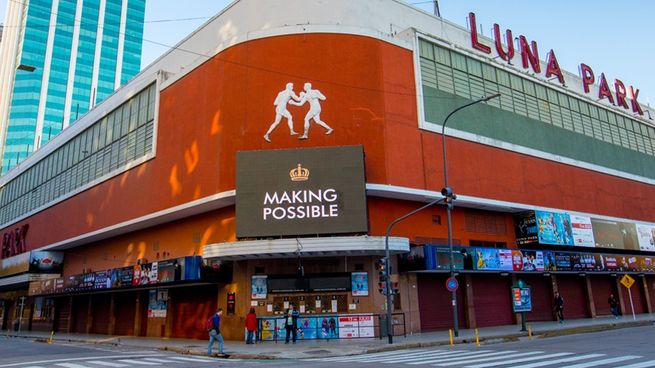The American group Live Nation, whose local representative is the businessman Diego Finkelstein, would stay with the historic Bouchard and Corrientes stadium for 30 years
A little more than two months after dire rumors spread about its possible closure, Luna Park would have a new life again if its concession is finalized, as it emerged today, to the American group Live Nation, whose local partner is the entertainment, gastronomic and hotel entrepreneur Diego Finkelsteinthe same one who brought Coldplay (with the record of ten River stadiums), Taylor Swift and a good part of the numbers of the Lollapalooza. In Uruguay, where he resides, Finkelsteincarries out the La Juanita project, or Sea Chacras, in San Ignacio, among other endeavors.
The content you want to access is exclusive to subscribers.
Live Nation Entertainment is dedicated to the promotion and organization of concerts, artist management and the sale of tickets for live shows. The company was founded in the United States in 2010 as a result of the merger between Live Nation and Ticketmaster. Live Nation, according to the newspaper La Nación, is the main candidate in the auction organized by the consulting firm E&Y to acquire the historic stadium of Corrientes and Bouchard.


The project involves a remodeling of the building with an investment of more than 30 million dollars and a concession for 30 years. This will involve profound modifications to infrastructure and comfort (one of the weak points of the stadium, as Disney On Ice viewers suffer every winter, is the lack of heating), but its historic façade will not be modified, according to the terms of the tender.
History
Luna Park, inaugurated in 1932 by Ismael Pace and José Lectoure, was since then one of the most emblematic venues in the city. In his years of splendor he had before him Juan Carlos “Tito” Lectoure (1936-2002), nephew of the founder, who turned it into the Argentine Madison Square Garden, that is, the most important boxing ring in the country, and in South America. Own Reading was usually compared to Don Kingthe man who brought boxing to its glory in the USA.
Historical fights took place between its ropes, with the most important boxers in the world. Reading He was also the manager of idols of that sport such as Oscar “Ringo” Bonavena, Nicolino Locche and Carlos Monzon. However, it was the businessman and manager himself who, in the 90s, decided to wipe the slate clean, and in line with the gradual loss of popularity of boxing in our country (and his personal disenchantment with that activity), he dedicated entirely the Luna Park to the show. The first one he personally produced was the “Dracula”, by Pepito Cibriánwhich was followed by other successes.
All this is in addition to the fact that the Luna has also been, throughout its history, the epicentre of shows and historic events, in conjunction with its activity as a sports centre (historic world basketball championships have also been held there, or sports-comedy teams such as the Globe-Trotters have performed there). The recital took place there “Goodbye Sui Géneris”they acted Liza Minnelli, Luciano Pavarotti, BB King, Tom Jones, Ringo Starr, James Brown, Mercedes Sosa, Víctor Heredia and Deep Purpleamong many other performers, and even the version of the opera “Turandot” by Giacomo Puccini was performed, with the same cast and staging of the Teatro Colón.
Among his most famous fights is that of “Goyo” Peralta vs. “Ringo” Bonavena (1965), with more than 25,000 spectators, a record. And, like Carlos Gardel In 1935, he himself Bonavena He was unveiled a little more than 40 years later at Luna Park in what were massive events. Likewise, the very popular “Titans in the Ring” had a final sold-out edition in the 60s, when they crossed paths Martín Karadagian and The Mummy in the background fight.
The historic meeting between Juan Domingo Perón and Eva Duarte, in 1944, during an arts festival to raise funds after the earthquake in San Juan. But the stadium also had its black flags, since it also hosted a gigantic concentration of the Argentine Nazi Party in 1938, shortly before Hitler invaded Poland and World War II broke out.
Source: Ambito
I am an author and journalist who has worked in the entertainment industry for over a decade. I currently work as a news editor at a major news website, and my focus is on covering the latest trends in entertainment. I also write occasional pieces for other outlets, and have authored two books about the entertainment industry.




